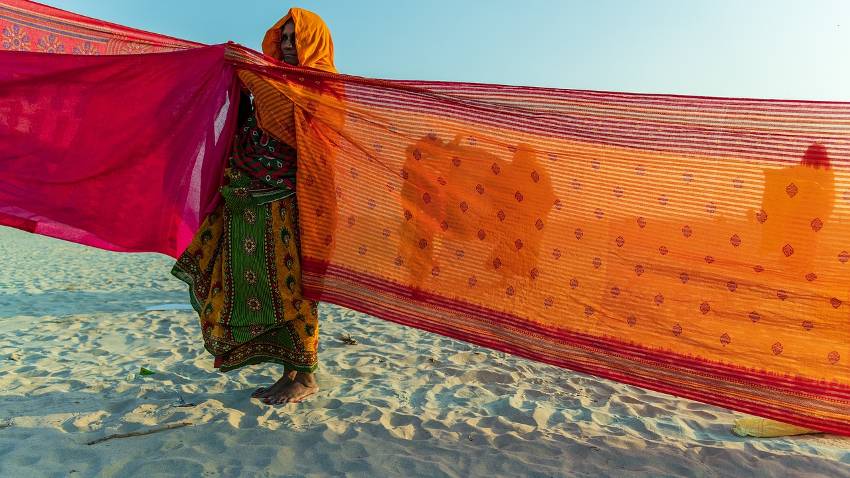Summary: Medical researchers have identified a concerning link between tightly tied traditional saree underskirts and a rare but aggressive form of skin cancer. The discovery, documented in two case studies, shows how chronic pressure and friction from tight waist cords can lead to persistent skin ulceration that may become cancerous. This finding has important implications for millions of women who wear traditional sarees.
Journal: BMJ Case Reports, November 5, 2024, DOI: 10.1136/bcr-2024-262049 | Reading time: 5 minutes
A Hidden Health Risk in Traditional Dress
A common clothing practice among women in rural India has been linked to an unexpected health risk. Doctors have identified what they’re calling “petticoat cancer,” caused by the tightly tied waist cord of underskirts worn beneath traditional sarees.
The condition develops when constant pressure and friction from tight clothing leads to chronic skin inflammation, which can eventually progress to a dangerous form of skin cancer known as a Marjolin ulcer.
Two Cases Reveal the Pattern
The researchers documented two revealing cases. In the first, a 70-year-old woman developed a painful, non-healing skin ulcer on her right flank that had persisted for 18 months. The skin around the ulcer had lost its pigmentation where she regularly tied her petticoat tightly around her waist.
The second case involved a woman in her late 60s who had worn a traditional type of saree called a ‘lugda’ daily for 40 years. She developed a similar non-healing ulcer that had already spread to her lymph nodes by the time she sought treatment.
Understanding the Risk
“The exact process by which chronic ulcers or wounds become malignant is unknown, although many theories have been proposed,” the doctors write in their report. “Every cutaneous lesion that is continuously irritated (chronically inflamed) has been shown to have a higher risk of developing malignant transformation.”
One patient’s experience highlights the subtle progression of the condition: “Six years ago, I noticed a small area of depigmentation on my right flank, which I initially dismissed as a minor skin issue. Over time, this spot turned into a non-healing ulcer, causing me concern and discomfort.”
Glossary
Marjolin ulcer: A rare but aggressive form of skin cancer that develops in chronically irritated or wounded skin.
Squamous cell carcinoma: A type of skin cancer that develops in the squamous cells that make up the middle and outer layers of the skin.
Cutaneous lesion: Any abnormal change involving the skin.
Chronic inflammation: Long-term inflammation where the body’s immune response remains active.
Quiz
- What specific part of the traditional clothing causes the risk?
Answer: The tightly tied waist cord of the underskirt (petticoat) - How long had the first patient’s ulcer been present before seeking treatment?
Answer: 18 months - What type of cancer can develop from the chronic irritation?
Answer: Marjolin ulcer (squamous cell carcinoma) - What early warning sign did one patient notice first?
Answer: A small area of depigmentation (loss of skin color)
Enjoy this story? Get our newsletter! https://scienceblog.substack.com/


